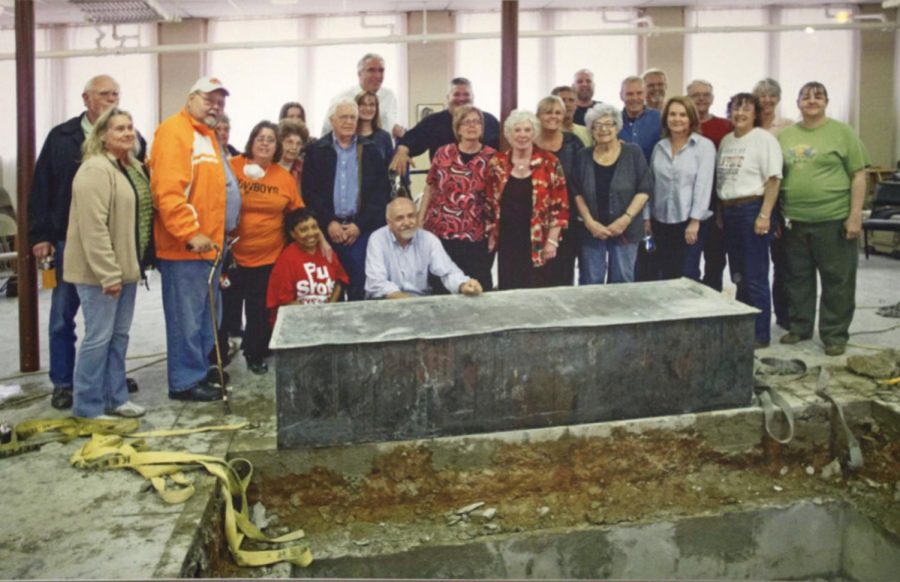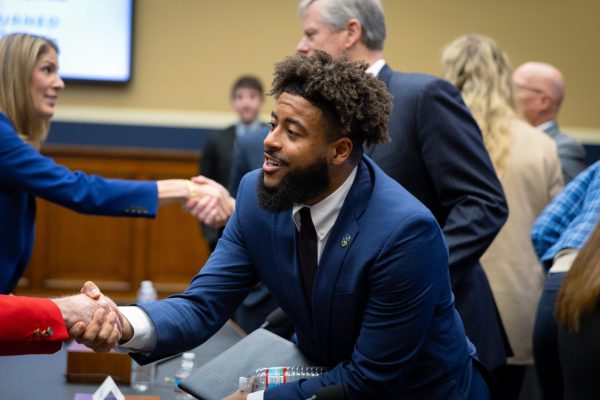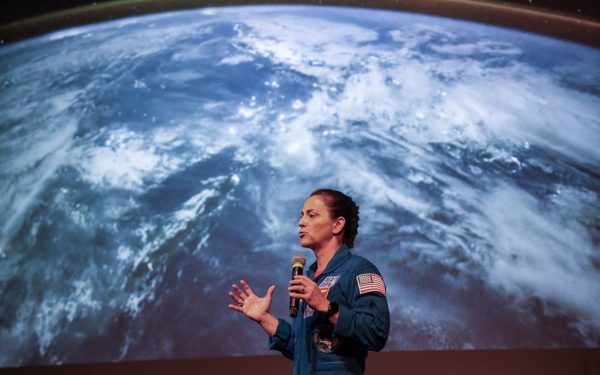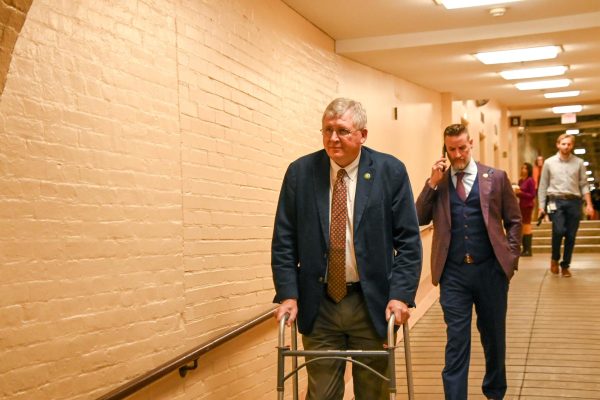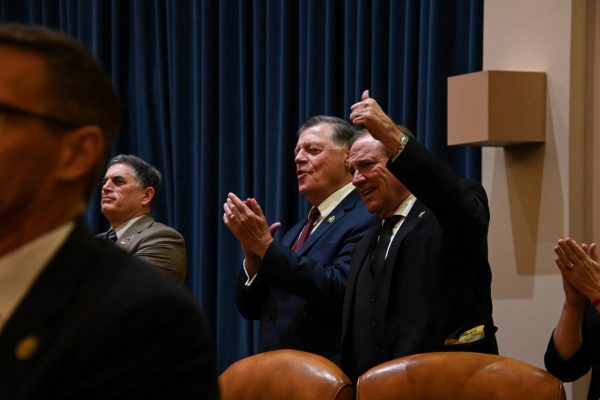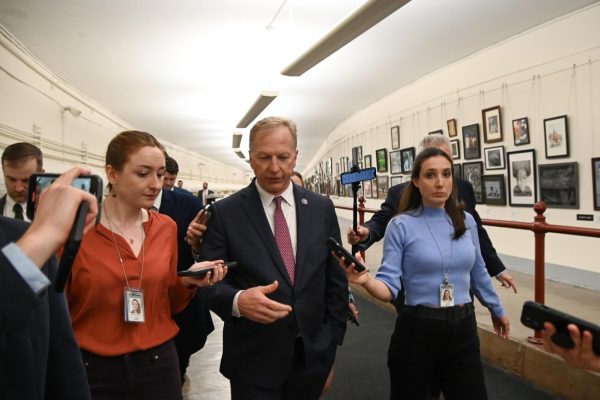Century Chest still offering clues to life at turn of 20th century
Members of the First Lutheran Church of Oklahoma City attended the opening of the Century Chest on April 22, 2013, after 100 years of it being buried in the church’s basement. Courtesy/Oklahoma Historical Society
Huddled around a copper vault in the basement of the First Lutheran Church of Oklahoma City, family, friends, church members and historians waited anxiously to find out what had been tucked inside 100 years earlier.
On April 22, 1913, parishioner Virginia Bland Tucker Sohlberg’s century chest idea came to life and was buried in the church’s basement. The project, originally planned as a fundraiser by the Ladies Aid Society to pay for a new church organ, quickly became a city-wide affair.
One hundred years later, on April 22, 2013, many questions about its contents were finally answered.
But people have started to forget its significance since it’s opening eight years ago. That’s why the Oklahoma Historical Society is now producing a documentary about the century chest for OETA. And the director of the Oklahoma Historical Society Research Division, Chad Williams, is also writing a book hoping to increase people’s knowledge and interest in a subject dear to him.
“We got great press; OETA showed it live on their website and thousands of people watched it at home and at school. Thousands of people know about this even outside of the state, and even still when I give a program, maybe 25% have ever heard of it,” Williams said.
“We had radio, TV, and news interviews from people all over the world and even in Australia. We just want more people to know about it,” he said.
After an eight-and-a-half-hour excavation in 2013, historians were finally able to learn about previously unknown details about life in Oklahoma 100 years prior, and 24 years after The Land Run of 1889.
“OU helped with ground penetrating radar from the archeological school and they could kind of see what we were looking at, then we drilled holes and put a camera in there and it was just complete concrete,” Williams said, referring to the University of Oklahoma. “There was even an ear of corn that was still completely yellow because of how well everything was preserved.”
The chest was filled with hundreds of letters, photos, newspapers, audio recordings, books, documents, and so much more that taught the historical society about the individuals, organizations, and American Indian tribes that lived in Oklahoma City.
The First Lutheran Church of Oklahoma City made certain that the Century Chest would not be forgotten. Former Pastor Gerald Peterson was put in charge of keeping the chest at the forefront of the community and the church’s mind for 26 years.
“Given the fact that it was down there for a century, we had a pledge that was read every year around April 22, so for the congregation, it was never on a back burner,” Peterson said. “The day that it occurred we really didn’t know what to expect, we had a booklet that listed all the stuff inside, but even that didn’t come close to seeing what was in it and to see that everything was in pristine condition… it looked like it did the day that it was put into the chest.”
The Oklahoma Historical Society has done its part to help ensure that people who lived more than 100 years ago are still remembered. At the Oklahoma History Center, an exhibit transports visitors to the world their predecessors lived in.
Because so many of the artifacts were multiple pages of letters, books and other items that can’t be touched in a museum but should be explored, Williams scanned every page to create an online collection for the world to see.
“This project was my baby and I wanted people to see it. Most of the time you look at an exhibit, you can’t see the next page of the book on display, and I wanted people to see it all,” Williams said.
While another 100 years from now Oklahoma City is sure to look much different, the church decided that this was a once in a lifetime project.
“It was considered to make another [time capsule] but this was such a unique event,” Peterson said. “They had a vision to capture the first 24 years of the history of Oklahoma… and they did it so well and with such high standards to put in the most important things that showed the progression from open prairie to the start of a city. And it is pretty amazing.”
Virginia Bland Tucker Sohlberg’s century chest idea insured the life and times of Oklahomans who came before would remain alive in public memory.
To learn more about the Oklahoma Century Chest or to view the entire collection, visit www.okhistory.org/centurychest.
Gaylord News is a reporting project of the University of Oklahoma Gaylord College of Journalism and Mass Communication.

